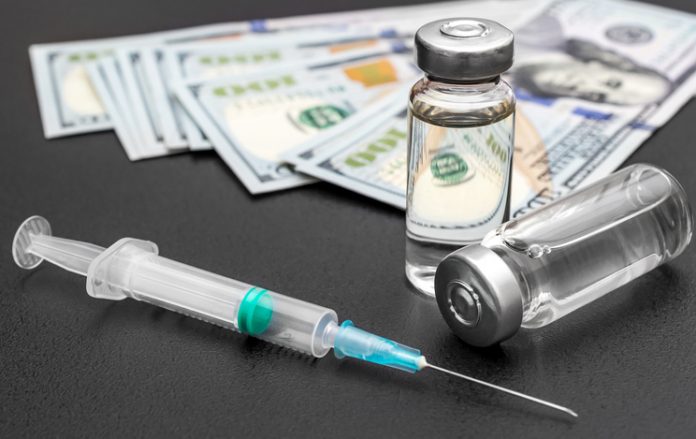To boost the acceptance of cheaper biosimilars, a drug industry trade group is taking a more aggressive approach in reaching out to pharmacists, patients, and their doctors.
The Biosimilars Council, a sister organization of the Association for Affordable Medicine (AAM), has recently launched a “Biosimilars Patient Resource Center,” a glossy website explaining the approval process of biosimilars and patient testimonials. It is also promoting the idea of having patients meet with a pharmacist before a doctor visit to learn about biosimilar options.
A study published in May 2022 in Joint Bone Spine showed that such consultations can significantly increase the number of patients who opt for biosimilars.
“Despite several studies proving the efficacy and safety of biosimilars compared with original drugs, switching to a biosimilar remains challenging when the decision is at the discretion of physicians with mandatory consent from patients,” write the study authors. “Educating patients about biosimilars seems important to increase the prescription rate of biosimilars,”
The Cost Factor
Biologics are produced in living organisms, can be costly to develop and manufacture, and cannot be replicated as “generics” like small molecule drugs. In 2018, biologics comprised 32.3 percent of all drug sales, about $125.5 billion.
Currently, more than 20 biosimilars are on the market at costs averaging 50 percent less than their brand biologic. They can, in turn, impact market costs. Data compiled by IQVIA estimates biosimilars are projected to provide $133 billion in savings by 2025.
“Biosimilars are helping to create more competitive markets, which in turn, are leading to lower prices for these brand biologics as well,” said Allen Goldberg, the senior vice president of communications at AAM.
“Through this market competition, biosimilars successfully contributed to $7.9 billion in savings in 2020 and more than $12.6 billion in savings over the last 10 years. As more biosimilars continue to reach the market, going forward, we expect savings to increase,” he said. “In just the past three years, we’ve seen biosimilars cut the growth of spending on oncology medicines in half.”
Overcoming Misconceptions
In 2007, Congress passed the Biologics Price Competition and Innovation Act, allowing for the application for licensure of a biological product based on its licensed biological product (the reference product).
Acceptance of biosimilars has been a marketing challenge, especially when drug plans shelter patients from the true costs of costly drugs. Consumers ultimately pay higher premiums for drug plans.
“The single greatest obstacle to greater biosimilar adoption amongst patients has been the misconceptions surrounding their efficacy and safety,” said Goldberg. “As mentioned, many patients have signaled these concerns with biosimilars and are choosing to purchase brand name biologics at higher prices.”
There has also been a marketing battle between brand-name drug makers and their biosimilar competitors.
“Most notably, many patients have mistakenly signaled concerns surrounding efficacy and safety of biosimilar medicines,” Goldberg said. “Because biosimilars are not identical to their reference products, many may believe that these medicines are not up to the same standards.”
Goldberg points out that the rigorous approval pathway by the U.S. Food and Drug Administration (FDA) assures biosimilars “have no clinically meaningful differences from the reference product.” Furthermore, use in Europe has been considered safe and successful for more than a decade.
Even Playing Field
AAM and the Biosimilars Council are also fighting for an equal playing field. In 2019, the groups published a paper, “Failure to Launch,” outlining the ways brand name competitors restrict the market.
One obstacle has been pharmacy benefit managers or PBMs, says Goldberg. “Pharmacy Benefit Managers continue to restrict patient access to lower cost biosimilar alternatives and instead steer them towards brand biologics,” Goldberg said. “By doing this, PBMs are able to take in greater profits from more expensive medicines under the current rebate structure.”
Despite the challenges, the market for biosimilars is growing. Biosimilars now account for more than 30 percent of the total market share and are projected to provide $133 billion in savings by 2025.
Bipartisan legislation introduced by Sens. Maggie Hassan (D-NH), Tim Kaine (D-VA), and Susan Collins (R-ME) would allow for interchangeability between biologics and some biosimilars in the FDA’s review process and require biologic makers to share information about market releases.
While the bill and the efforts of the Biosimilars Council are a step in the right direction, more reform is needed, says Gregg Girvan, a scholar at FREOPP.
“These are rather modest proposals that probably won’t move the needle much in driving greater biosimilar adoption in the United States. Part of this is because patients are shielded from the true cost of drugs through third-party payment of health benefits,” said Girvan.
“In addition, laws in the U.S. afford biologics a longer exclusivity period granted by the FDA than small molecule drugs (i.e., tablets or capsules),” he said. “In short, we need to reform our patent laws, align biologics laws with those for small molecules, and allow automatic substitution at the pharmacy level.”
Ashley Bateman (bateman.ae@googlemail.com) writes from Virginia.
This article was updated on August 31, 2022.




















